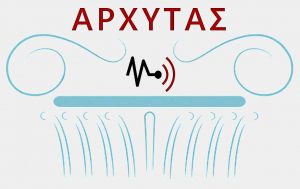Contact in the Material Point Method and rocking body dynamics
Sofianos C.D., Koumousis V.K. (2021). Contact in the Material Point Method and rocking body dynamics. in Proceedings of the VII International Conference on Particle-based Methods (PARTICLES 2021), 4-6 October, 2021, Hamburg, Germany (virtual event).
Abstract | In this work the Material Point Method (MPM) is employed to study rocking body dynamics. In the MPM the body is discretized into a set of material points. All the variables of the system such as stress, strain, velocities etc. are stored in these material points. A background grid is also employed (usually an orthogonal static grid), and the various variables are mapped to the nodes of the grid using shape functions, similar to the Finite Element Method. The equations of motion are solved at the background grid nodes and the updated state variables are mapped back to the material points thus renewing their positions and velocities. Mass conservation is automatically satisfied since every material point holds its mass during the analysis. The background grid is static and only used to solve the governing equations at the end of each computational step. After that, it is reset to its original undeformed configuration. The method in its original form, employs a single velocity field for all material points, that results in an inherent no-slip, no-penetration contact algorithm. This means that collisions and contact are automatically resolved.The method is examined in its ability to simulate the rocking behaviour of bodies. It is extended by introducing Coulomb friction forces along the contact surfaces. This way friction sliding is simulated and interpenetration of bodies is not allowed. The method is accessed in terms of its capability on calculating the contact surfaces and contact normals as well as simulating the dynamic rocking behaviour of rigid and deformable bodies. A benchmark problem of a rigid block subjected to horizontal ground acceleration is analysed and results are compared with analytical solution. Furthermore, the interactions from the rocking dynamics of two columns of an historic structure are examined. Results are compared with other numerical methods and already published results.



